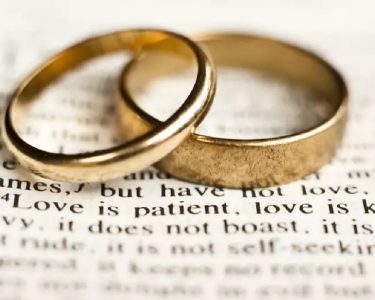
THE VALUE DATING ECONOMY
Kyle Benson
It’s Easter. You’re in the grocery store, and you can’t stop staring at the blonde girl buying flowers. You feel a pull towards her. She’s beautiful.
You’re obsessively strategizing ways to introduce yourself. When we become attracted to someone, we don’t necessarily choose who it is: there’s never a logical reason behind it.. Attraction and love is a complicated process. I remember meeting this beautiful blond who modeled for Cover Girl, but the moment our hands touched, I felt revolted by her man hands. She was an amazing person, but for some odd reason this was something I just couldn’t get over.
Let’s explore how the process happens.
Miguel and Maria are at a wedding of a mutual friend. As they approach each other, there’s tension building between them. From the second they noticed each other; the two enter into a nonstop exchange of information.
This reduces uncertainty, and it weighs the value that each person offers the other. Miguel and Maria were making judgments and assumptions about one another before the first word was even spoken.

There is something about Miguel’s well-groomed hair, strong physique and neatly trimmed facial hair that Maria finds unique. Maria’s soft voice and green eyes excite Miguel. As they begin to play verbal ping-pong, they can sense the excitement and energy of something more than just a conversation.
They find similarities in each other’s personalities, which increases their chemistry and connection. This develops positive feedback loops as they to continue to get to know each other.
As Miguel talks about his life growing up in Puerto Rico and his childish tendencies of stuffing food in his mouth like a chipmunk, it makes Maria smile. As he explains that he saves the storage for later, she giggles and lightly hits him on the shoulder. As soon as she does this, the distance between them decreases unconsciously. It continues to shrink until they both give in to the urge to kiss.
What’s happening here?
What causes Miguel to get so excited about Maria, rather than his best friend Kelly? She’s similar to Maria. They’re both attractive Latina women with green eyes? What is it about Miguel that turns on Maria more than her friend John, who is well-groomed and in good shape, just like Miguel?
When you meet someone, your mind immediately seeks to remove uncertainty… Are they a psychopathic killer? Is she going to try to use me, or try to make me do something I don’t want to do? Do they like me? Will I like them?
Your unconscious is forming an assessment based on countless factors. Their physical attractiveness, fashion style, ethnicity, accent, body language, their emotional energy, and the content of the words coming from their lips. You’re assessing whether those words match the intentions you’ve already assumed about them.
At some point, we began to move past a place of uncertainty. We start to ask ourselves new questions that predict the value of our future relationship. 1 Is this someone I want to keep as a friend, someone I just want to sleep with, or someone I want to seriously date? All of these evaluations are happening simultaneously as the verbal and nonverbal conversation continues.
Anyone else’s behavior is filtered through your mind by your own perceptions, feelings, and thoughts. The Cover Girl model may have a husband that loves her hands, because his mother’s hands were rough and calloused from working hard at the local mill when he was young. Meanwhile, I find them disgusting and discomforting.
In its simplest form, human interactions can be reduced to value feedback: a nonstop loop of expressing, receiving and interpreting of verbal and nonverbal.
When you talk to an attractive girl and she doesn’t reply, you receive negative feedback. You might interpret that reaction as she’s being rude. You might interpret that she’s hard of hearing. Or you might interpret it that she’s attracted to you, but she’s playing hard-to-get.
You expressed yourself by talking, but you received nothing from her in the conversation. This makes it feel like a one-sided conversation, and your brain interprets the experience. What your brain interprets out of her response is crucial to what happens next.

When the feedback loop is positive and to our liking, we find the person attractive. More compelling. Your attraction to each other is dependent on the appraisal method we use to value ourselves and others. It’s in this sense that we attract what we are.
Everything in life has a value, and just like happiness, our value differs from anyone else. It’s based on the quality of experience we have or desire to have throughout our life. Maybe you value religion more than money or physical attractiveness more than intelligence. and so on. To make this process a little more simple, I am going to take a few exemplary items of what may make someone attractive, and provide a value that will total 100.
24-year-old Kelly unconsciously values the following things:
Religion = 4
Socio-economic status = 25
Attractiveness = 37
Age = 5
Political ideology = 1
Intelligence = 6
Hobbies = 2
Partying = 12
I’ve purposely skewed Kelly’s values to demonstrate how demographics play into attractiveness. Obviously, Kelly is a wild child. She cares deeply about superficial values, such as wealth and attractiveness, over intelligence, hobbies or age.

She’d be perfectly happy to date a club owner who is in his mid-thirties. She wouldn’t care if his life didn’t contain much outside of partying. People tend to place a higher value on things which either makes them feel better or compliment and advance their own perceived value.
Kelly’s best bet to meet someone would be to spend a majority of her time going to nightclubs, rather than attending a meditation retreat. This validates the point of this demographics. Our matching of similar values are contextually driven and contextually matched.
Some may even consider Kelly a stereotypical gold digger . Such women tend to come from poverty. She’s contextually driven, which means she values money more than anything else, and she will seek out a man that is very wealthy because she believes that money makes her life valuable, which contextually matches her values. Not that this is true every time; a woman can also be a ‘gold digger’ if she’s from a very wealthy family, and was raised to believe money was important.
Every single one of us have a unique value system to account for our unique preferences. It’s much more than your political beliefs or your cultural preferences. It’s a contact super glued to your eyeball that filters, sorts and processes all of the information you receive. Once this information is received, it is assigned a value.
Playing soccer has a specific value to me.
Watching Dexter and eating ice cream has a high value to a girl I know
Shooting guns has a specific value to another friend of mine.
Our value is derived from our biological programming, our own preferences (if we choose them), and socialization that is relative to our specific cultures. I like to think of matching values as a car key. The feedback is the key; the unique shape is the value. Whether it starts the car is dependent on whether the key matches the keyhole.
So ask yourself, right now: what are your values?
If I were to use the same listed values as Kelly, my list would be:
Religion =3
Socio-economic Status = 6
Attractiveness = 16
Age = 7
Political Ideology = 9
Intelligence = 30
Hobbies = 20
Partying = 9
It’s clear that I value knowledge and intelligence, because I love a mentally stimulating conversation. I feel more emotionally connected to a person who is going to challenge or broaden my views of the world.
Understanding your own values will enable you to consciously select environments, and meet women who share those same values. Those are the types of relationships we want. We want them with women that have similar values, because those are the women who will make you happy. That’s what relationships should be about. Not the number of times you’ve gotten laid.
- Sunnafrank, Michael. “Predicted Outcome Value In Initial Conversations.” Communication Research Reports 5.2 (1988): 169-172. ↩



